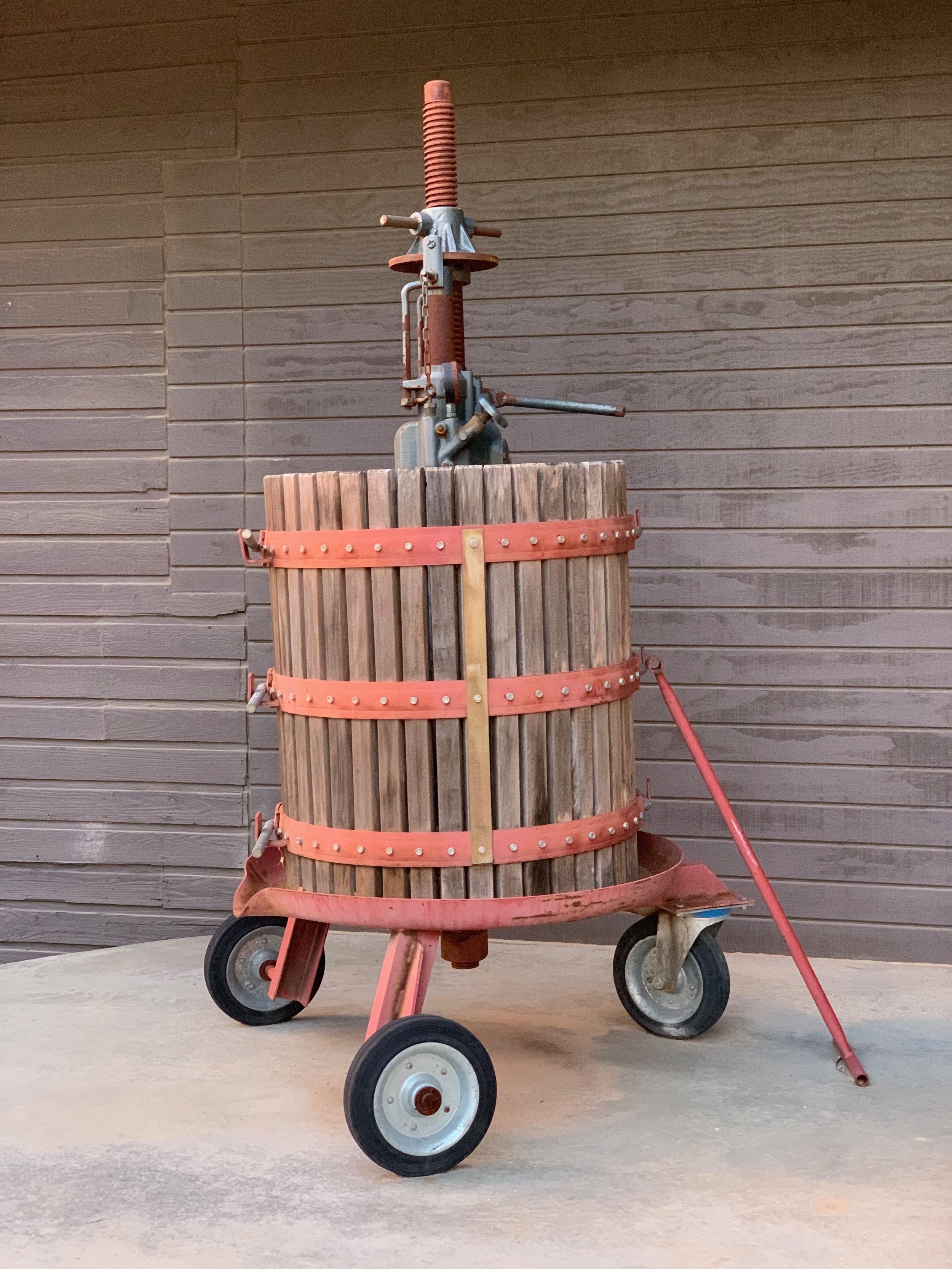A Small Basket Press
As previously mentioned, wine making is a blend of art and science. Another aspect that is often regarded as an art form is choosing the method to use to press the grapes to extract the juice.
The wine press is thousands of years old. The first wine presses were found in what is now Armenia, where grapes were pressed with the feet. In ancient Egypt, Greece and Rome, presses became more technical and precise. Then, in the Middle Ages, the basket press was developed and its use became widespread.
Today there are three main types of wine presses: screw presses, bladder presses and basket presses.
Screw Press: A horizontal screw press consists of a horizontally enclosed cylinder, in which grapes are added. Inside the drum, there’s a rotating screw, which is applying pressure to the grape skins by plates from both ends. Because of the pressure of grapes against the sides, juices start to drain through the slated cylinder.
Bladder Press: A bladder press consist of a large horizontal cylinder closed at both ends. The grapes are fed from the top, through a pusher or from the side. Inside the rotating drum is a bladder that inflates with air and exerts pressure on the grapes. The juice then flows out through small openings on the sides of the cylinder.
Basket Press: The basket press (see photo above) works by pressing the grapes from the top and bottom. Grapes are placed inside a basket or a cage, then usually two half-moon blocks are placed on the top of the fruit. With the help of an iron ratcheting assembly, pressure is put on the blocks that squeeze the grapes, with juices flowing out from the sides.
The “art” of deciding which method to use comes from multiple factors:
Controlling the Style and Flavor: A gentle press extract can extract mostly juice while an aggressive pressing can extract more tannin, phenolics and bitter flavors from the skins and seeds (and stems if pressing whole clusters
A screw press can be the harshest
The bladder or pneumatic press and be more precisely controlled
The basket press can be slow, gentle and is often used for artisanal wines
Pressing the grapes isn’t just a pre-defined step in wine making. The wine maker carefully selects the method that best suits their style of wine making and the desired product. This is yet another aspect of the “art” of wine making. Cheers!






